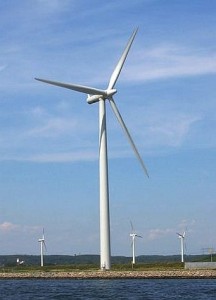The third and final major new coal shipping proposal at the Port of Corpus Christi has been canceled, according to documents from recent Port Authority meetings reviewed by the Clean Gulf Commerce Coalition, a multistate campaign to halt expansion of coal exports from the Gulf Coast while promoting clean energy and businesses, that includes Public Citizen.
Check out ThinkProgress.org’s story that resulted from our post by clicking here.
Ambre Energy, a major Australian coal company struggling with the poor global market for coal, has terminated its lease and will not pursue development of the project. The failure of each of the major new coal export terminals in Texas casts further doubt on the viability of the international coal market and new export facilities in Gulf Coast ports.
According to minutes from a recent Port Authority meeting, “The coal export market has dramatically declined in the last three years and Ambre no longer considers a coal export terminal viable in this area.” (click here to read the minutes, this quote is from page 173)
“This is the third coal export project that has been canceled in this region,” said Hal Suter, chair of the Lone Star Chapter of the Sierra Club and a lifelong Corpus Christi resident. “Ambre’s failure is a huge relief for Corpus Christi residents and it’s a clear sign of an accelerating shift away from coal. Texans don’t want coal, Gulf states don’t want coal and international markets don’t want it either.”
In August of this year, New Elk and its parent company, Cline Mining Corporation, terminated their lease for a planned coal export terminal, and development of the La Quinta Trade Terminal was put on hold after grassroots activists rallied against it and Sierra Club released a report in early 2012, The Port of Corpus Christi Gambles on Coal Export Development.
Along with financial troubles, the coal export industry faces resistance from community and environmental activists concerned about air and water pollution from coal dust and added rail and barge traffic. Coal-fired energy is also a primary cause of greenhouse gases, which lead to climate disruption, extreme weather and rising sea levels.
“The people of course Corpus Christi have said no coal – no way,” said Tom “Smitty” Smith, director of Public Citizen’s Texas office. “So the coal barons are beginning to pick on small communities, like Point Comfort about 60 miles north of here.”
The Texas Commission on Environmental Quality (TCEQ) has made a preliminary decision to approve an air permit for a facility that will store, import and export coal, petroleum coke and limestone through Point Comfort.
The Corpus Christi Port Authority meeting minutes also predicted a poor future for coal exports.
“Currently, the export coal market has shrunk substantially,” the minutes reported. “The domestic market has seen older coal-fired power plants closed with some being refitted to burn natural gas. Wind and solar power…have created additional pressure on coal.” (Click here to read the minutes, this quote can be found on page 48)
Ambre Energy has encountered obstacles in trying to develop coal export terminals in the Pacific Northwest as well. Last week, the company’s shareholders allowed Denver-based Resource Capital, a private equity firm, to increase its ownership stake in the company to avoid insolvency.
The coal industry has tried to offset the move away from coal-powered energy in the United States by stepping up exports, particularly to China. But recently China, too, has begun to shift away from highly polluting coal. Over the summer, China announced a ban on construction of new coal-fired plants around the cities of Beijing, Shanghai and Guangzhou to control air pollution.
The Clean Gulf Commerce Coalition, a multistate campaign to halt expansion of coal exports from the Gulf Coast while promoting clean energy and businesses,
includes Gulf Restoration Network (GRN), Air Alliance Houston, Louisiana Bucket Brigade, Louisiana Environmental Action Network (LEAN), Public Citizen, Sierra Club, and SouthWings.











